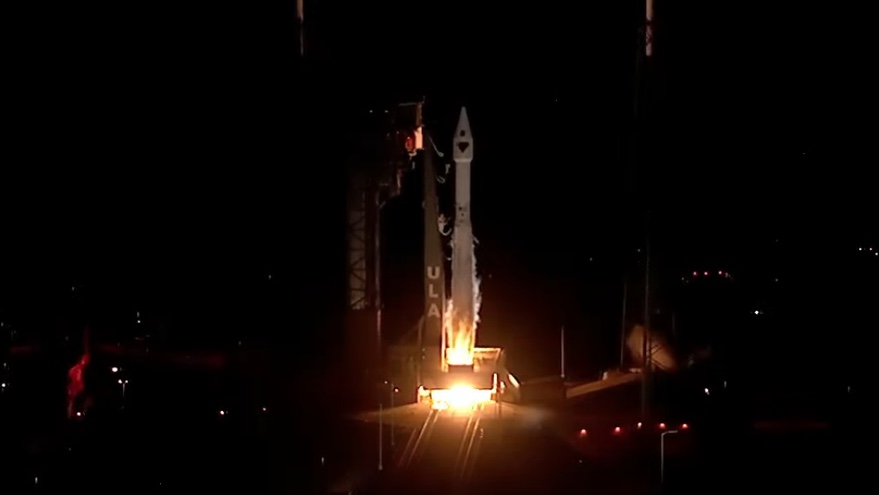WASHINGTON — An Atlas 5 successfully a launched NASA spacecraft Oct. 16 on a mission to study distant asteroids that may hold clues to the early history of the solar system.
The United Launch Alliance Atlas 5 401 rocket lifted off on schedule from Space Launch Complex 41 at Cape Canaveral, Florida, at 5:34 a.m. Eastern. The spacecraft, built by Lockheed Martin, separated from the Centaur upper stage 58 minutes later, after two burns of the rocket’s Centaur upper stage. The spacecraft deployed its two circular solar arrays in a 20-minute process that started shortly after separation from the Centaur.
The $981 million mission, part of NASA’s Discovery program, will travel to two swarms of asteroids called Trojans that lead and follow Jupiter in its orbit. The spacecraft will fly by seven Trojan asteroids as well as an eighth asteroid in the main belt on its way to the Trojans.
Lucy will fly a complex trajectory to achieve those flybys. It will perform gravity assist flybys of the Earth in October 2022 and December 2024 before flying by the main-belt asteroid, Donaldjohanson, in April 2025. It will go by five Trojans in the leading swarm between August 2027 and November 2028. After another Earth flyby in December 2030, it will go by a pair of asteroids in the other, trailing Trojan swarm in March 2033.
Scientists believe the Trojan asteroids are relics from the early history of the solar system, and can provide insights into its formation. The spacecraft is named after the Lucy fossil of a human ancestor found in Ethiopia in 1974.
“One of the really surprising things about the Trojans, when we started to study them from the ground, is how different they are from one another,” said Hal Levison, principal investigator for Lucy at the Southwest Research Institute (SwRI), during a prelaunch press conference Oct. 13.
Some of the asteroids are gray, he noted, while others are red. “That is clearly telling us something really fundamental about the history of the solar system. We think the color indicates different formation locations, and these things were mixed together during the last gasps of planet formation.”
Lucy will study those asteroids with three main instruments. A high-resolution camera will take images of the asteroid with a resolution as sharp as 14 meters per pixel. A multispectral camera will collect data at visible and infrared wavelengths to determine the composition of the asteroids’ surfaces. A thermal emission spectrometer will measure surface temperatures, which can help determine surface properties.
“There’s no single measurement that will tell us exactly” where the Trojan asteroids formed, said Cathy Olkin, deputy principal investigator for Lucy at SwRI, during an Oct. 14 briefing. “That’s why we need a suite of instruments to put this puzzle together.”
Lucy’s complex trajectory required launching during a three-week window that opened Oct. 16. That put pressure on NASA’s Launch Services Program and ULA to accommodate the launch while working on other missions, including the postponed launch of Boeing’s CST-100 Starliner on its uncrewed OFT-2 test flight on another Atlas 5.
NASA and ULA decided to use the Atlas 5 first stage originally assigned to OFT-2 for Lucy. “We looked at the manifest and decided it would be to the advantage of the Lucy mission and to the advantage of ULA’s processing of the manifest to use that booster for Lucy,” said John Elbon, chief operating officer of ULA, at the Oct. 13 press conference.
That required removing the two solid rocket boosters required for OFT-2 but not needed for Lucy, as well as replacing an avionics box. Elbon said an advantage of using the OFT-2 booster for Lucy is that it had already gone through a tanking test that gave engineers confidence in its performance.
“It gave us a booster that, frankly, reduced our risk to be able to meet the first day of the launch window and gave us an opportunity just to reduce the overall schedule risk,” he said. “Overall, it ended up with a situation that worked out really well.”
